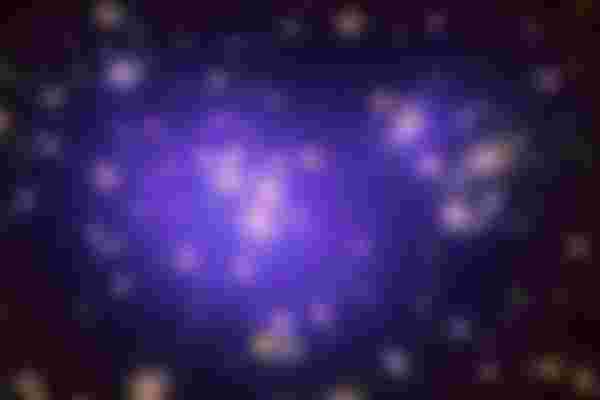
Dark Matter is a riddle that has tormented stargazers for just about a century. Here's the beginning and end we know, and all that we don't.
1.Dark matter is EVERYWHERE
Planets, stars, space rocks, galaxies – the things that we can really see – comprise under 5% of the absolute universe. So what makes up the rest? In that lies the secret.
Dark matter is the name we provide for all the mass in the universe that stays imperceptible, and there's a ton of it. Examination recommends that about 70% of the universe is made out of dark energy, while the leftover 25% is made out of a strange substance known as dark matter. We can't see it, we don't get it, yet we know it's out there.
2.It's totally invisible.
Dark matter is truly difficult to consider, in light of the fact that we have no chance to get of seeing it. This odd substance doesn't communicate with light, so it's absolutely invisible.
So how would we realize it exists? All things considered, in light of the fact that it influences the universe peculiarly; and that is something we can see.

3.Dark matter binds galaxies together.
So dark matter can't be seen, yet it tends to be felt in light of its amazing effect on space.
Dark matter applies 'gravitational power', implying that it draws other matter towards it. Furthermore, there's such a lot of dark matter that its gravitational power is sufficient to hold whole cosmic systems – like our own Milky Way – together. That is the reason dark matter is regularly compared to a goliath bug catching network's, coinciding universes set up
4.It mutilates the appearance of space.
We can likewise see the impacts of dark matter just by gazing toward the sky. At the point when space experts notice distant galaxies, they frequently seem extended and strangely formed.
This impact is known as 'gravitational lensing, and it's brought about by dark matter's gravitational power. This power is colossal to the point that it genuinely twists the light around galaxies, misshaping their appearance.
5.Researchers have made dark matter 'maps' .
Researchers have had the option to piece together maps of space, showing where they think dark matter is hiding.
By studying 'relic radiation' left over from the Big Bang, researchers can recognize zones in space where more radiation exists – and more radiation implies more matter. Thusly, we can recognize 'areas of interest', where more elevated levels of dark matter might be concentrated.
6.We don't have the foggiest idea what dark matter is made of.
Most of researchers accept that dark matter is a type of extraordinary molecule.
We definitely think about photons, electrons, quarks and numerous different particles, however there might be a lot of others standing by to be found. At least one of these unidentified particles could be liable for impacts – like gravitational lensing and the 'spider meshing's' – that we partner with dark matter.
7.Dark matter probably won't exist.
Dark matter may be an unfamiliar molecule, or it very well may be nothing by any means. A few researchers accept that the impacts we partner with dark matter are really brought about by gravity.
It's conceivable that our current hypothesis of gravity is defective, and that the impacts we trait to dark matter could basically be an eccentricity of gravity that we don't yet comprehend.
8.Spaceships are chasing for signs.
So is dark matter a molecule or a result of gravity? Indeed, we don't have a clue, and more examination is required before either hypothesis can be refuted valid or.
On the off chance that dark matter particles exist, they ought to at times slam into each other: a collaboration that produces radiation. Thus spacecraft have been fitted with cutting edge indicators to look for indications of this radiation. Some fascinating outcomes have sprung up, however the quest for hard proof is still on.
9.Some countries have dark matter labs hidden deep, deep underground
A few nations have dark matter labs covered up profound, profound underground
In the event that hard proof for dark matter is at any point discovered, it will be as little, inconspicuous impacts. Thus, to distinguish these little signals, researchers have created dark matter labs profound underground, a long way from the impacts of overwhelming foundation clamor.
In the UK, there's Boulby Underground Laboratory: a dark matter lab in North Yorkshire, situated more than 1,000 meters underneath the Earth's surface. What's more, other comparative offices exist across the globe, from Canada to Australia.
10.We are edging nearer to reality with regards to dark matter
There's as yet a ton we don't have a clue with regards to dark matter, and a few secrets may never be disentangled. Yet, as innovation progresses, we are edging nearer towards reality.
Dark matter might be unpredictable, subtle and baffling, yet researchers everywhere on the world will proceed with the chase – and what they find could at last change our very idea of the universe.

